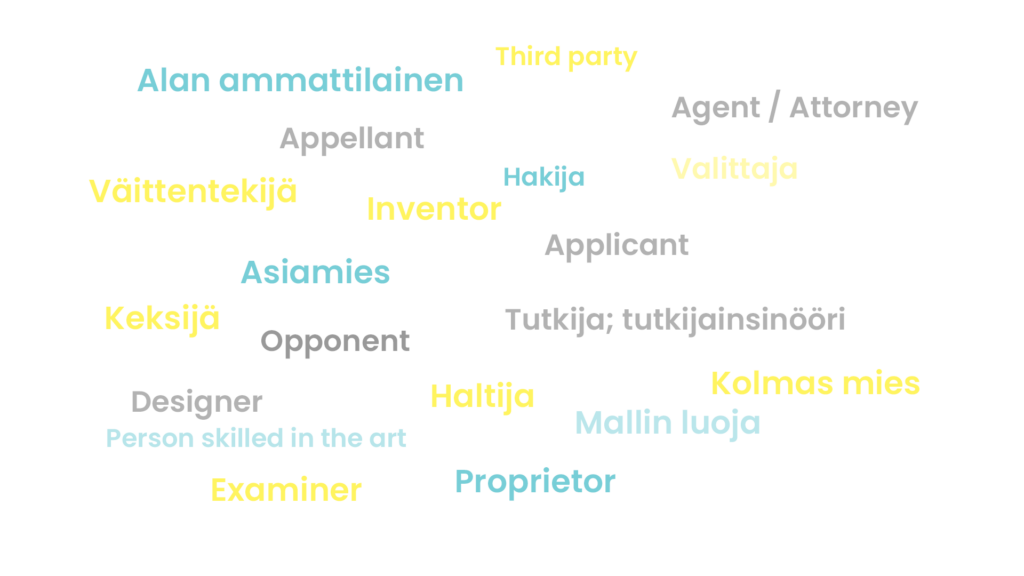IPR easily – People in the field (part 2)

- Kaisa Suominen
- –

- Joose Kilpimaa
- –
- News
- –
- 20.2.2023

Part 2 – People in the field
Agent / Attorney
The representative of the applicant during prosecution in the office. Typically, agents are persons skilled in their own art, i.e. they have been trained to draft applications and prosecute them. Trademark and design agents are typically lawyers by training, while patent agents have a university diploma in a field of technology or life science.
Appellant
A party that files an appeal on the decision of the office. Most typically an appeal is filed at a boards of appeal of the patent office, in Finland at the Market court.
Applicant
The party seeking protection (patent, trademark or design). Mostly, the applicant is a company or an organisation such as a university or a research organisation. The applicant can also be a natural person, such as an inventor.
Designer
An individual who has created the design, which has been applied for registration. The designer is always a person. The proprietor of a design can be a company, to whom the designer has transferred the rights to the design. The transfer has to be confirmed in the application. Applies to Finnish applications only.
Examiner
The civil servant of the office, whose duty is to examine the applications filed at the office. At the Finnish patent office, patent applications are examined by one examiner, at the European patent office by an examining division, composed of three examiners.
Inventor
Patent and utility model applications must indicate an inventor, who must be a natural person. Inventor is the person who has created a technical solution to a technical problem, i.e. made the invention. Usually there are several inventors for one application.
Opponent
A party different from the proprietor, who believes that no protection should have been granted, and files an opposition at the office, after grant or registration. In some countries, oppositions are handled before grant. The opponent is party to the opposition proceedings.
Person skilled in the art
The inventive step of an invention and sufficiency of disclosure of a description of a patent application are assessed in relation to a person skilled in the art. This is a fictive person, who knows everything made available to the public, but is unable to make any combinations unless expressly pointed towards such combination. The person skilled in the art can also be a group of persons, for example from different fields of technology.
Proprietor
The applicant becomes the proprietor when the protection is granted or registered. The protection is thus propriety of the proprietor.
Third party
A company or person, who during the application or opposition proceedings is of the opinion that no protection should be granted or upheld, and who wishes to make this opinion known to the office. This is done by filing so-called third party observations, which are sent for information to the applicant/proprietor, while the third party does not become party to the proceedings.
Abbreviations in the field of IPR here.


